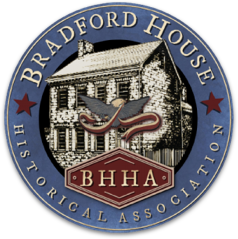Excise Tax on Whiskey
Nearly 20 years after the Revolutionary War began, the United States government faced a small-scale revolution by some of its citizens. To create a self-supporting and effective government, Treasury Secretary Alexander Hamilton knew he needed to find a steady source of revenue, so he proposed, and Congress instituted in 1791, an excise tax on whiskey produced in the United States.
Farmers in Western Pennsylvania, many of whom distilled whiskey and profited from its sale, were hostile to the new law. They felt the tax abused federal authority, wrongly targeting those who relied on crops such as corn, rye, and other grains for their living. The farmers frequently distilled their grain into liquor, which was easier to ship and much more profitable than grains. While large-scale farmers could absorb the financial strain of an additional tax, indigent farmers were less able to do so without falling into dire financial straits.
July of 1794
In July of 1794, a force of 400 disaffected whiskey rebels, mainly from Washington County, attacked and destroyed the home of a tax inspector just south of Pittsburgh. The rebellion grew in numbers, if not in actions, and threatened to spread to other states. Hamilton knew a large and potentially hostile force in Pennsylvania could not be tolerated. If the government were to survive, it would have to show itself capable of keeping control. One of the leaders of the rebellion, Washington attorney David Bradford, and his family lived in the historic Bradford House from 1788 to 1794. His residence was cut short because of his involvement in the Whiskey Rebellion.
Negotiations and Show of Military Force
Hamilton advocated using military force; President George Washington instead put state militia on the ready and sent in negotiators. When talks proved fruitless, Washington acquiesced to Hamilton's view and led a force of 13,000 troops, more than he had commanded during the Revolutionary War, into Western Pennsylvania, to Bedford. Washington returned to Philadelphia while Hamilton and Virginia Gov. Henry Lee continued the march to the Monongahela River. By the time the federal force arrived, the rebellion had collapsed, and most rebels had fled.
Treason and Pardon
Two men were convicted of treason and later pardoned by Washington. David Bradford fled south to Spanish West Florida (present-day Louisiana). He took up a new life there and, in 1797, completed a home in St. Francisville. His wife, Elizabeth, and children joined him shortly after that. Eventually, Bradford received a pardon from President John Adams for his role in the Whiskey Rebellion.





